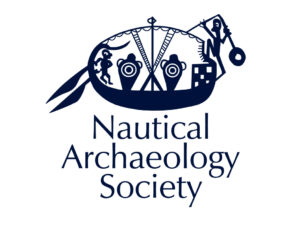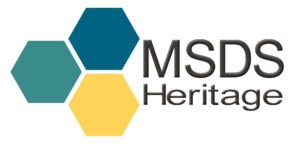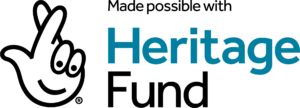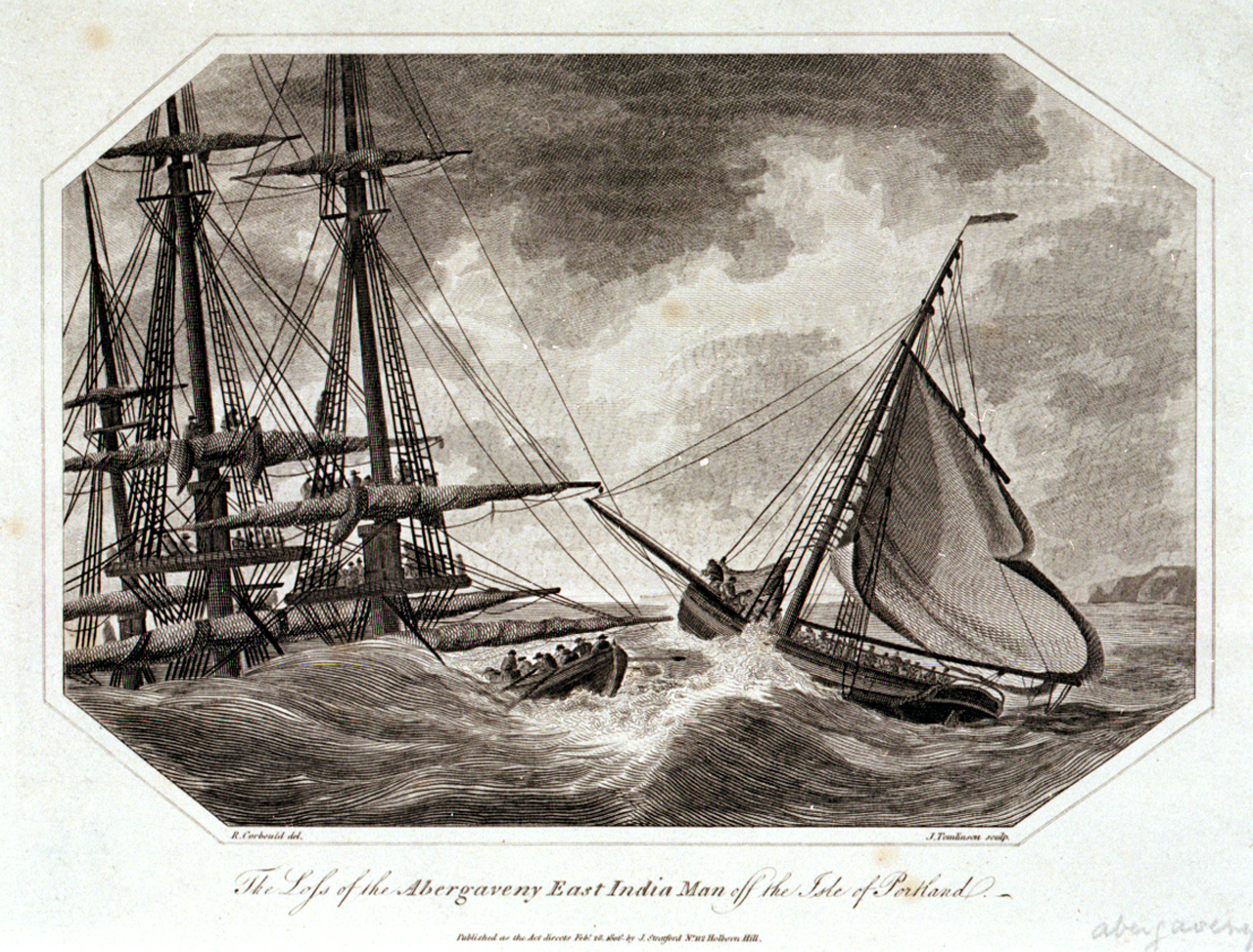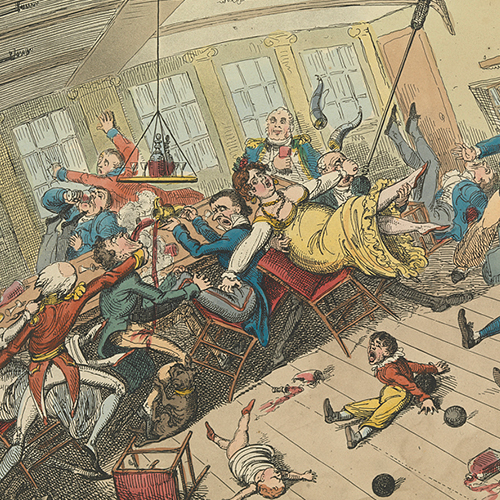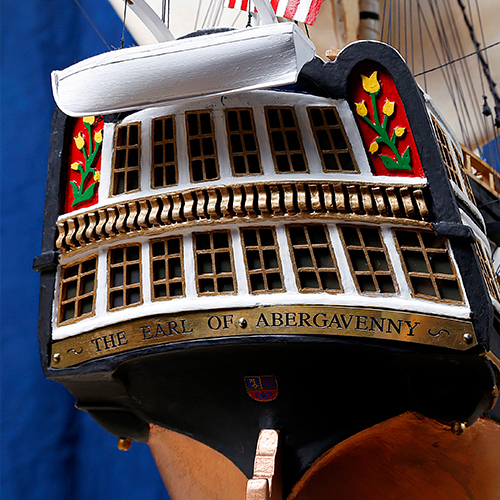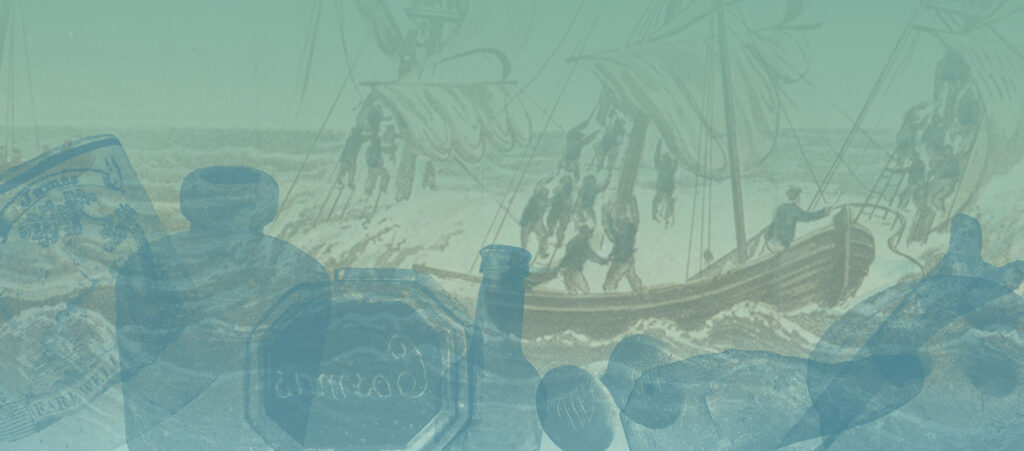Captained by John Wordsworth, brother of the Romantic poet, William Wordsworth, the Earl of Abergavenny was one of the largest trading ships of its time.
A Quiet Master
Contrary perhaps to the typical image of a ship’s captain, John Wordsworth was known by his shipmates as ‘the philosopher’. He could often be seen pacing the deck in a reflective manner and reading poetry written by his brother, Spenser and Shakespeare. He was known for being shy, having a dislike of social situations and society gossip. Described as enigmatic, he would probably be thought of today as an introvert. Although not gregariousness in manner, he was still capable of working the East India Company system to the advantage of his maritime career.
Part of the Crew of the Abergavenny East Indiaman, delivered from their Perilous Situation Hand coloured aquatint from T. Tegg’s “Accounts of Shipwrecks” Courtesy of Royal Maritime Greenwich
Profit & Risk
The private trading opportunities afforded to officers of the East India Company, coupled with the profitable trading route of Bengal to China, meant that John Wordsworth was set to make a personal fortune from the Earl of Abergavenny’s voyage, much of which, he planned to improve the lives of his brother and sister, William and Dorothy, at their home in the Lake District.
Instead of a fixed salary, East Indiaman appointments came with allotted cargo space for captains and officers to fill with items to trade. Before the voyage, a captain’s time would be spent raising credit from family and other investors to purchase and trade the most popular and profitable commodities of the day. Further profit could be made from passenger fees, sums of which were decided upon by the captain. Despite maintaining steady employment on Company ships and rising quickly through the ranks, to this point, John Wordsworth’s voyages hadn’t proved financially lucrative, applying some pressure on this trip to pay off his debts and secure the financial wellbeing of his family.
Traffic & Trade
The cargo on board the ship comprised a wide variety of goods to be supplied to the British administrators and army officers in Bengal. Cotton, rice, sandalwood and indigo would be transported from Bengal to China, with tea, silk and porcelain picked up in Canton for the voyage home. In addition, the Earl of Abergavenny was carrying a large quantity of silver dollars, (worth, at the time, £70,000) to pay for the goods it would be picking up in Bengal and China. Also collected in Bengal and bound for China would be a consignment of opium, which would form a substantial part of the overall profit John Wordsworth stood to gain from the voyage. On a wider scale, Britain’s support of the opium trade at this time was helping to finance payment of
the East India Company administration, as well as the ongoing war against the French.
Ambition
Achieving the rank of captain was not, on the face of it, difficult to achieve. The prospective candidate should be over 25 years old and have gained experience as a second or chief mate on a minimum single voyage. However, in the past, this arrangement had led to an excess of candidates for roles that could only be filled once an existing captain had left his post. The appointment of captain would be achieved therefore, not only by hard work, but determined personal campaigning amongst allies. Amongst John Wordsworth’s influential circle was the abolitionist, William Wilberforce, and his cousin, Captain John Wordsworth Snr.
For further reading:
John Wordsworth and the wreck of the Earl of Abergavenny, Ed Cumming
The Wreck of the Abergavenny, Alethea Hayter
Deep Distresses, Richard E Matlak
Wordsworth: A Life, Juliet Barker
To see 3D digital models of finds excavated from the Earl of Abergavenny click here
“Silence!” the brave Commander cried;
To that calm word a shriek replied,
It was the lst death-shriek.
-A few (my soul oft sees that sight)
Survive upon the tall mast’s height;
But one dear remnant of the night –
For Him in vain I seek.
William Wordsworth
Look in detail
Take a tour of some of our objects available to view in fabulous 3D! These images have been scanned by our volunteers who will be adding to the archive as the project continues.
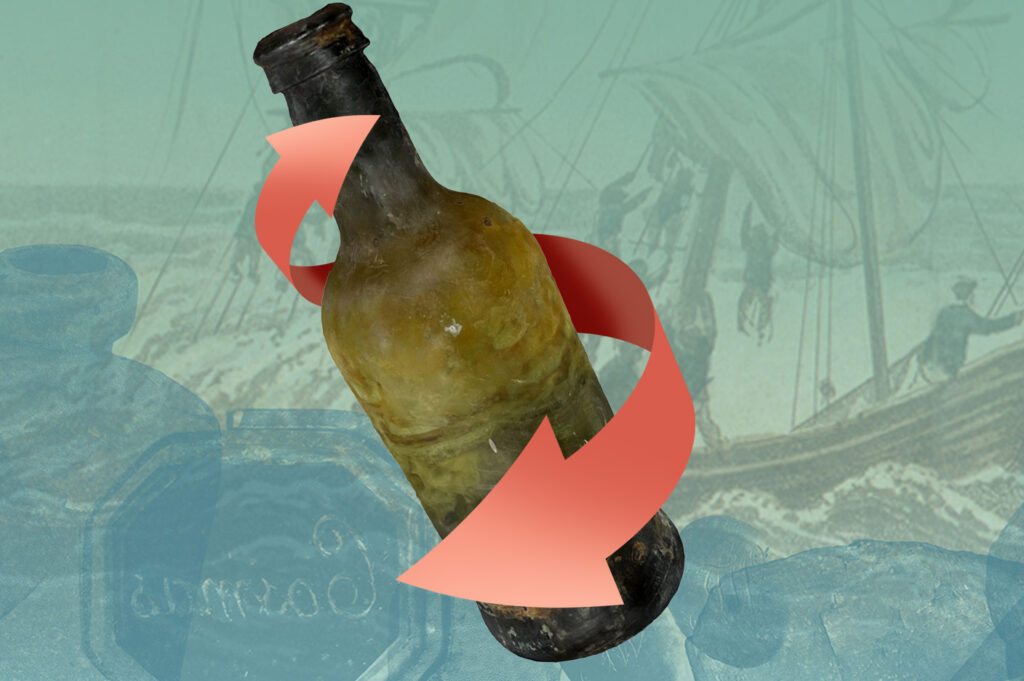
In November 2021, Portland Museum won a National Lottery Heritage Fund grant to launch a digital volunteering initiative and break down barriers to heritage. Working with partners, MSDS Marine and MSDS Heritage and the Nautical Archaeology Society, the museum is training volunteers in digital recording techniques to share 3D images and information on the finds from the Earl of Abergavenny shipwreck with the wider community.
